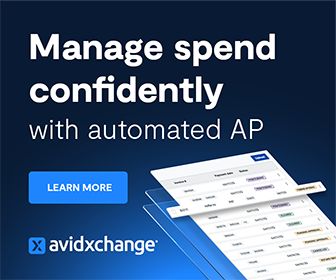After discussing the early push for ESG disclosures, the importance of transparency in this, and the role of technology making this possible, we would today like to explore the first steps to making a transparent ESG disclosure process a reality.
Background: What is ESG Reporting and Why is It Important?
As discussed, ESG reporting stands for Environmental, Social, and Governance reporting.
What is ESG Reporting?
Often used interchangeably with the term Corporate Social Responsibility, the field is broken into the following:
- Environmental: The E in ESG stands for environmental. This component provides information on how a company is exposed to and manages risks and opportunities related to climate, natural resource scarcity, pollution, waste, and other environmental factors, as well as a company’s impact on the environment.
- Social: The S, or social, component of ESG comprises information about the company’s values and business relationships. For example, social topics include labor and supply-chain information, product quality and safety, human capital topics such as, employee health and safety, and diversity and inclusion policies and efforts.
- Governance: This component encompasses information about a company’s corporate governance. This could include information on the structure and diversity of the board of directors; executive compensation; critical event responsiveness; corporate resiliency; and policies and practices on lobbying, political contributions, and bribery and corruption.
Why ESG Is Increasingly Important
According to the AICPA’s Journal of Accountancy, one of our favorite sources for information, investors are showing more interest in ESG information, with many calling for public companies to incorporate into SEC submissions ESG disclosures on topics such as climate change and diversity and inclusion metrics.
Like any push for a public company change, the pressure will continue to trickle down to private companies. New stakeholders will take interest—applicants and other players will prioritize responsible companies, providing an opportunity for private companies to gain a competitive advantage by providing this. But with the current uncertainty, many are still asking how.
What Auditors Will Be Looking for in ESG Disclosures
Luckily, the Journal of Accountancy, the AICPA, and the Center for Audit Quality looked to provide clarity on how to make this happen. In a publication released in February, Association of International Certified Professional Accountants and the Center for Audit Quality (CAQ) looked to show auditors what to look for.
Though focused on the audit profession, this guide can show those on the corporate side some of the data you should start looking to collect and provide. The guide, ESG reporting and attestation: A roadmap for audit practitioners, offered the following insights for readers:
Documentation of Methods and Metrics
Before an attestation engagement can be accepted, the practitioner is required to determine that the criteria applied in the preparation and evaluation of the subject matter are suitable and will be available. Between new standards discussed below and the industry in general, companies want to report similarly to those in their industry.
This will result in one of two approaches:
Compliance with a Documented ESG Framework
As the field of ESG evolves, so does the focus on compliance with a documented framework. Frameworks provide principles-based guidance that helps companies identify ESG topics to cover and determine how to structure and prepare the ESG information they disclose.
For example, large institutional investors such as BlackRock have specifically requested reporting in accordance with SASB and TCFD recommendations. Even when a company uses these recognized standards, the practitioner is still required to determine that the selected metrics are prepared in accordance with suitable and available criteria.
Company Reported Metrics
These measures consist of metrics that do not match standards. Similar to non-GAAP metrics, these may provide better information than strict adherence to SASB or TCFD guidance. Companies may prefer these metrics because they allow them to provide their unique perspective and enhance their disclosure(s) with relevant company-specific information.
However, the guide does highlight some challenges, namely the following:
- The company may have the ability to present more favorable outcomes than might be the case if sustainability reporting standards were used.
- The evaluation of the suitability and availability of the criteria may be more challenging than if existing reporting standards and frameworks were used.
- A company-defined metric may reflect only a small deviation from a metric defined by a sustainability reporting standard or framework, which may lead to questions as to why the sustainability reporting standard or framework was not used.
Accuracy and Validity
One of the biggest dangers is the fact that optional reporting could still leave you liable. According to the guide, “false or misleading statements can subject companies and practitioners to liability under federal securities laws, even if the information is not included in an SEC submission.” With increased pressure, extremely politicized expectations, and scrutiny, inaccuracy could be harmful.
Openness
One of the biggest things to avoid is reporting positive outcomes for positivity. Audit practitioners will be looking to make sure that you’re not cherry-picking metrics.
Consistency
Consistent reporting that uses the same methodology year over year, with any changes clearly explained, could help to limit a company’s ability to selectively choose, manipulate, or provide misleading information.
Comparability with Peers
Companies need to document ESG information in a way that’s similar to competitors. Information and metrics that are comparable to the metrics and information disclosed by peer companies could assist users of the information in making comparisons between peer companies.
Frequency
Another thing to consider is that commitment to consistency needs to include timeliness. Information should be reported on a similar schedule as the rest of your other information, as information reported on an annual (or more frequent) basis, similar to other forms of corporate reporting (i.e., the financial statements), promotes consistency and comparability.
Readying Your Company for a New Reporting Landscape
Though the primary focus will be on public companies, private ones will feel the long-term effects of these demands and should start preparing for the new expectations. Because ESG information is increasingly used by the capital markets and other stakeholder groups, such information needs to be reliable, credible, and well supported.
There are many paths to better business, but one of the most effective ways to learn more is to discuss initiatives with your peers. The Controllers Council was launched to help controllers across the US and around the world to improve skills and discuss changes. Out members-only forum and frequent events will share with you all the latest. Click here to learn more about the benefits of membership.
Additional Resources
New ESG Guidelines to Consolidate Standards and Reduce Confusion
Path to IPO: Could Pre-IPO Company Controllers Benefit from a Part Time Chief?
From Startup to IPO: The First Steps to Manage the First Funding Rounds




